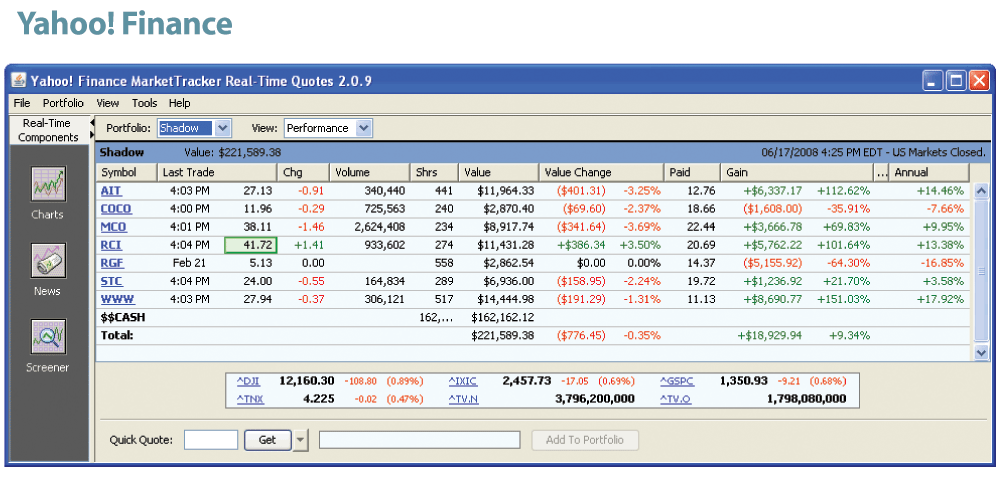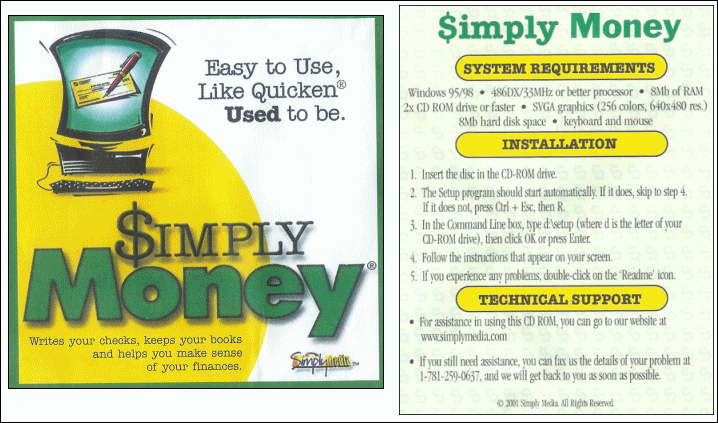Three Simple PortfoliosKiplinger
Post on: 20 Апрель, 2015 No Comment

We asked the experts to recommend low-cost funds for the long term.
By Bob Frick, January 27, 2009
As we survey the wreckage of our portfolios in the new year, it’s worth considering this: You can beat the great majority of investment professionals by employing simple strategies that use low-cost index funds. Index funds track a broad swath of the stock market, such as big-company stocks, small-company stocks, emerging-markets stocks, and so on.
Some of the biggest brains in the world of finance — from Nobel Prize-winning professors, such as William F. Sharpe, to, arguably, the greatest money manager of our time, Warren Buffett — advocate a passive style of investing epitomized by index funds.
The evidence seems to back up these intellectual heavyweights. Over the past 15 years through December 31, Standard & Poor’s 500-stock index performed better than 71% of mutual fund managers who specialize in the stocks of large U.S. companies.
How well have you done by picking managers who actively buy and sell securities? It’s true that some fund managers can beat their relevant index. But as Princeton professor Burton Malkiel asserts in his famous book, A Random Walk Down Wall Street. there’s no good way to find such skill before it has been demonstrated over time.
Advertisement
Building a simple portfolio based on index funds is, well, simple. You can find my take on index funds in Three Winning Portfolios. But we thought it would be interesting to ask some of the champions of easy, low-cost investing to suggest their own portfolios.
So we kick off the Simple Portfolios corner of Kiplinger.com with recommendations from three experts. Our request was straightforward: balanced, low-cost portfolios, with no more than eight investments, for people investing for the long term. We’re not fanatical about our guidelines; we allowed our experts to use actively managed funds as well as index funds. They submitted their portfolios in December 2008, and we decided to begin tracking performance as of January 1, 2009. We will rebalance the portfolios twice a year, on the last day of June and the last day of December.
The first is from Larry Swedroe, director of research for St. Louis-based Buckingham Asset Management, and author of several useful books, including The Successful Investor Today and The Only Guide to a Winning Investment Strategy You’ll Ever Need .
Swedroe doesn’t mince words. Believing in active management is absurd, he says, calling it the triumph of hope over wisdom and experience. The wise investor knows that some managers will beat the indexes occasionally, but when they do, Swedroe says, it’s purely out of luck.
Swedroe’s simple portfolio reflects these sentiments, as well as the tendency of value stocks and small-company stocks to do better than other stocks over time.
Swedroe’s portfolio:
15% Vanguard Value Index (symbol VIVAX ) (Tracks an index of undervalued stocks from the largest 750 U.S. companies)
15% Vanguard Small Cap Value Index (VISVX ) (Tracks an index of stocks of small, undervalued U.S. companies)
13% iShares MSCI EAFE Value Index (EFV ) (Tracks an index of stocks of large, undervalued foreign companies)
13% iShares MSCI EAFE Small Cap Index (SCZ ) (Tracks an index of stocks of small overseas companies)
4% Vanguard Emerging Markets Stock Index (VEIEX ) (Tracks an index of companies from developing nations)
40% Vanguard Inflation-Protected Securities (VIPSX ) (Invests at least 80% of assets in inflation-indexed bonds issued by the U.S. government)
Next is the portfolio of Princeton professor Burton Malkiel, whose latest book (with three co-authors) is From Wall Street to the Great Wall: How Investors Can Profit from China’s Booming Economy.
In Malkiel’s view, managers in developed markets will be hard-pressed to beat their indexes over time. So he has the bulk of his portfolio’s assets in index funds. And Malkiel keeps the majority of the assets in foreign stocks because, he says, foreign markets offer better growth opportunities than the U.S. does.
While most of his portfolio consists of passively managed and exchange-traded funds, which also follow indexes, Malkiel has stakes in actively managed funds as well. (In fact, this portfolio represents his actual investments.)
He owns Vanguard Capital Opportunities because of his enormous respect for the managers at Primecap Management Company, who run the fund for Vanguard. Malkiel, a former director of the Vanguard Group, says he feels he can make a small bet on Primecap’s expertise because the core of his portfolio is in index funds.
More interesting are his picks of Templeton Dragon and Matthew’s India, both actively managed. I believe that of all the places in the world, China and India are the two that will have the highest growth rates, says Malkiel. Templeton Dragon, a closed-end fund that focuses on Chinese stocks, is managed by longtime emerging-markets hand Mark Mobius. While Malkiel is not sure that Mobius can beat the relevant index, he thinks Mobius is an excellent manager. If I can buy Mark Mobius at 85 cents on the dollar, I’m happy to do it. At its January 16 closing price of $16.52, Templeton Dragon sold for 6.9% less than the value of its underlying assets.
Malkiel says that there aren’t many good ways to play India, and if there were a good closed-end India fund trading at a discount to its net asset value, he’d buy it. For now, he’ll take the Matthew’s fund.
Malkiel’s portfolio:
20% Vanguard Total Stock Market ETF (VTI ) (Tracks a broad index of U.S. companies)
20% Vanguard FTSE All-World ex-US ETF (VEU ) (Tracks a broad index of stocks from developed and emerging foreign markets.)
20% Vanguard Total Bond Market ETF (BND ) (Tracks a broad index of high-quality U.S. bonds)

10% Vanguard Capital Opportunity (VHCOX ) (An actively managed fund that likes big growth companies down on their luck)
10% Vanguard Emerging Markets ETF (VWO ) (Tracks an index of stocks developing nations)
10% Templeton Dragon (TDF ) (Invests in stocks from China and nearby nations)
10% Matthew’s India (MINDX ) (Invests in stocks from India)
Given the interest in fixed-income investing (and the fear and loathing surrounding the stock market these days), we also sought a stockless portfolio. William Larkin, fixed-income portfolio manager at Cabot Money Management, in Salem, Mass. says his portfolio was originally designed for conservative clients who wanted conservative investments.
These days, though, he finds that many clients who hadn’t considered themselves conservative in the past are now interested in fixed-income investing only. This portfolio represents all parts of the fixed-income market at the lowest possible cost, he says, and recently yielded 6.3%. It also has a healthy slug of inflation protection, which is particularly reassuring given all the money that’s being printed for various government stimulus and rescue plans around the world.
Larkin’s portfolio:
25% iShares Barclays Aggregate Bond ETF (AGG ) (Tracks a broad index of high-quality U.S. bonds)
25% iShares iboxx $ Investment Grade Corporate (LQD ) (Tracks an index of the most liquid, long-term corporate bonds)
10% Fidelity Floating Rate High Income (FFRHX ) (Invests in floating rate bank loans that automatically adjusts to rising short-term interest rates. It offers additional inflation hedge)
10% iShares MBS Fixed Income (MBB ) (Tracks a broad index mortgage-backed securities)
7.5% SPDR DB International Govt Inflation-Protected Bond (WIP ) (Invests in an index of non-U.S. inflation-linked bonds)
7.5% PowerShares Emerging Markets Sovereign Debt (PCY ) (Tracks an index of emerging markets government debt)
7.5% iShares Barclays TIPS Bond (TIP ) (Tracks an index of inflation-protected, U.S. Treasury securities)
7.5% iShares Iboxx $ High Yield Corporate Bond (HYG ) (Tracks an index of high yield bonds)














